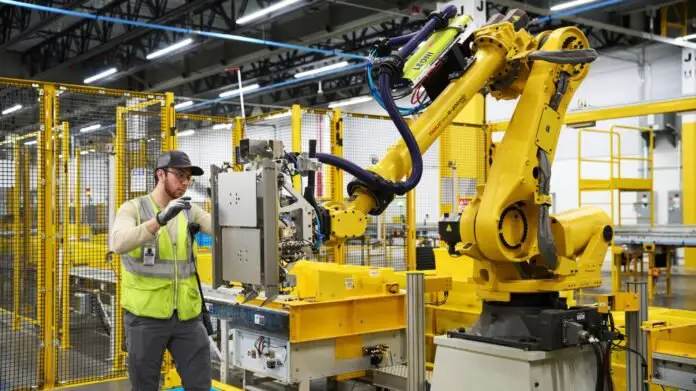Amazon is on the verge of having more robots than human workers in its warehouses, as the number of deployed robots is rapidly approaching the number of human warehouse employees.
Founded by billionaire Jeff Bezos, the company has been increasingly integrating robots to either replace human labor or lessen their workloads. Recently, it added over one million robots to its warehouses, according to a report from the Wall Street Journal.
Currently, robotics supports approximately 75 percent of Amazon’s global deliveries. While this shift has alleviated some of the menial, repetitive tasks for human employees, it has also led to job reductions.
Last year, the average number of employees per warehouse was the lowest recorded in 16 years, even as the volume of packages shipped per employee has risen, the Journal reported.
Some of Amazon’s latest facilities feature smaller employee footprints, enabling faster deliveries, according to a company spokesperson. Chief Executive Andy Jassy stated that Amazon is implementing AI technology in its operations to enhance inventory management, demand forecasting, and robotic efficiency.
The e-commerce giant plans to reduce its total workforce in the coming years, as noted by the Journal. Notably, robotic technology has advanced significantly, evolving from handling heavy items to performing complex tasks like packaging and sorting.
At Amazon’s warehouse in Shreveport, Louisiana, products reportedly move 25 percent faster than at other facilities, thanks to robots that sort, stack, and consolidate millions of items, transport packages, and assist with customer orders.
Yesh Dattatreya, a senior applied scientist at Amazon Robotics, suggested that this trend will not adversely affect employment, stating, “You have completely new jobs being created,” such as robot technicians. He emphasized that the goal is for robots to assist human workers.
However, Tye Brady, Chief Technologist at Amazon Robotics, reinforced that the intention is to make employees’ jobs easier rather than replace them.
Sheheryar Kaoosji, executive director of the Warehouse Worker Resource Center, cautioned that these changes may not benefit Amazon workers in the long run, arguing that the company aims for a significant workforce reduction in high-density facilities.

